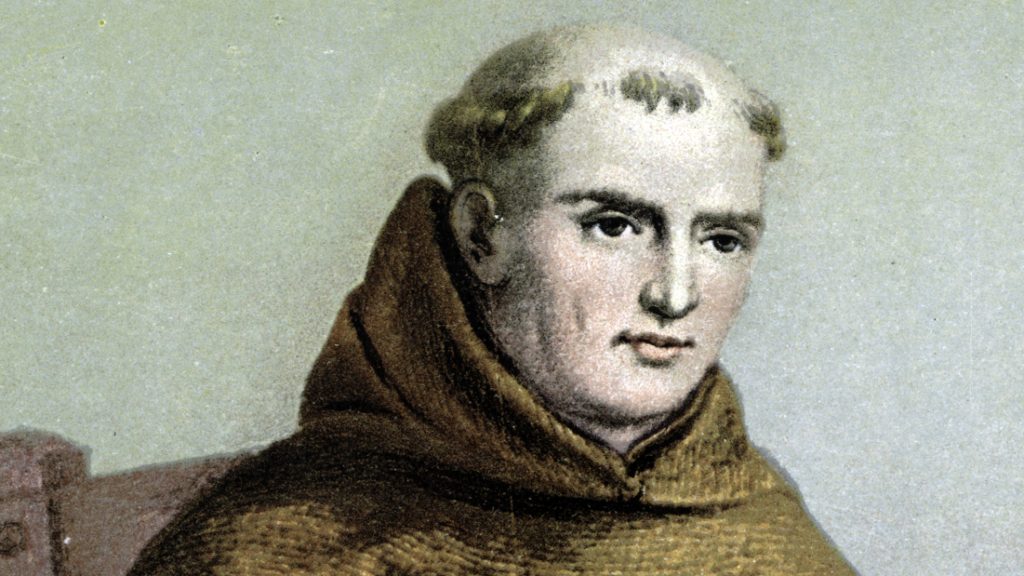St. Junípero Serra was born on November 24, 1713, in Majorca, Spain. He joined the Franciscans in 1730, and was such an accomplished student that he was appointed a lector of philosophy even before he was ordained.
Junípero earned his PhD and began teaching, eventually earning the Dun Scotus chair of philosophy. But he left his career at the age of 36, and went to the New World as a missionary.
In Mexico, Padre Serra worked among the Pame Indians, learning their language and translating the catechism so they could understand. He became known for his preaching, his penance, and his mortification practices, often pounding his breast with a stone or holding lighted torches to his bare chest.
Soon after he came to Mexico, Padre Serra was bitten by a spider on the leg, which left him with permanent injuries. But he continued to walk everywhere he could to evangelize.
In 1767, Padre Serra was assigned to preach in what was then known as “Upper California,” a region encompassing much of today’s state of California. He established several missions, which remain today, stretching from San Diego to San Francisco.
When St. Junípero Serra died in 1784, he was openly mourned by many of the native peoples he had worked with. He was buried at San Carlos Borromeo Mission in Carmel by the Sea.
St. Junípero is credited with bringing Catholicism to California.

